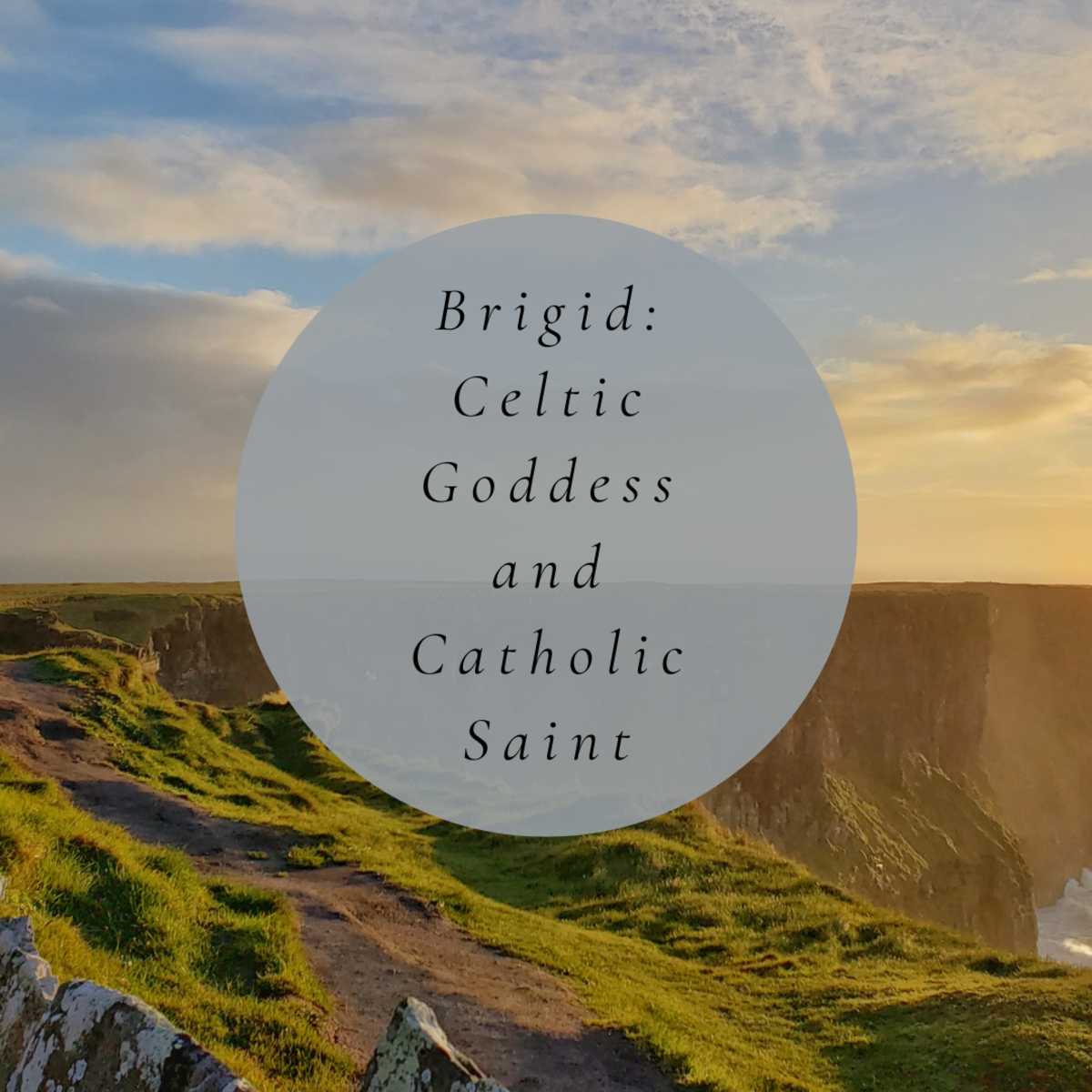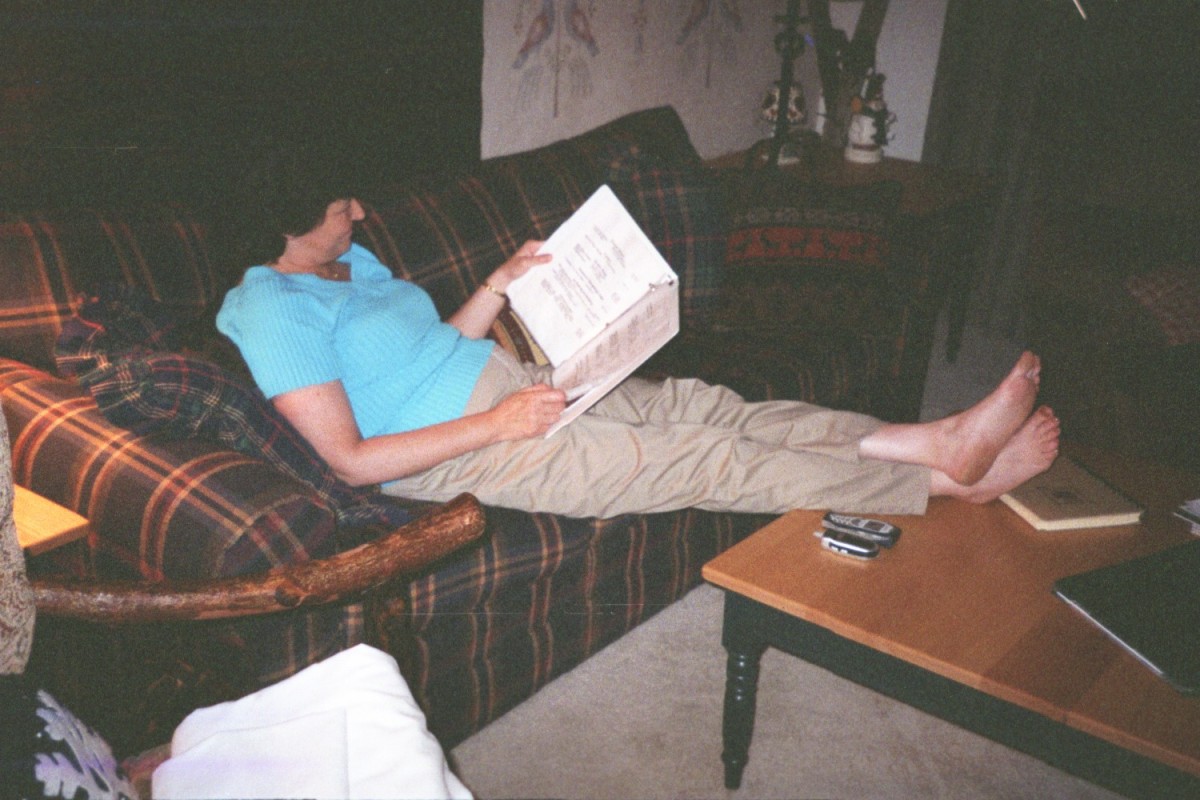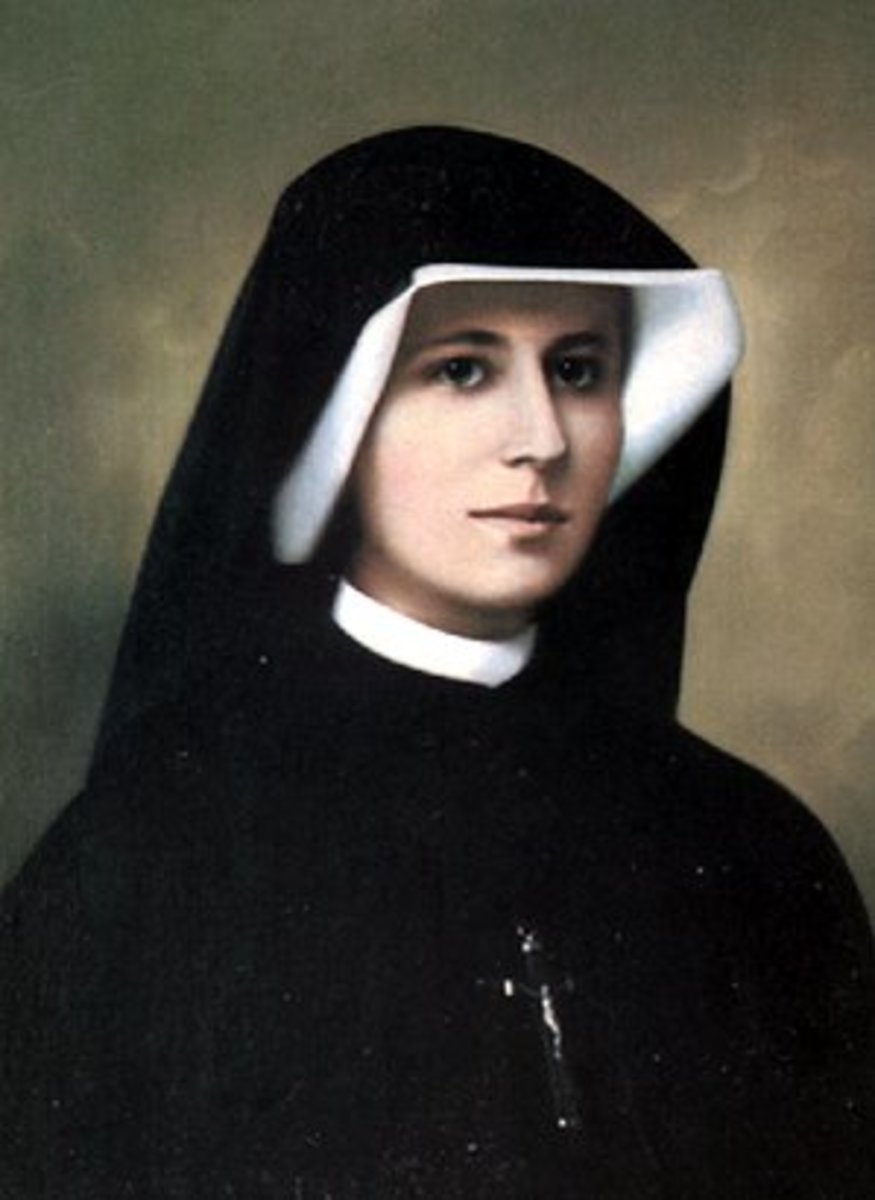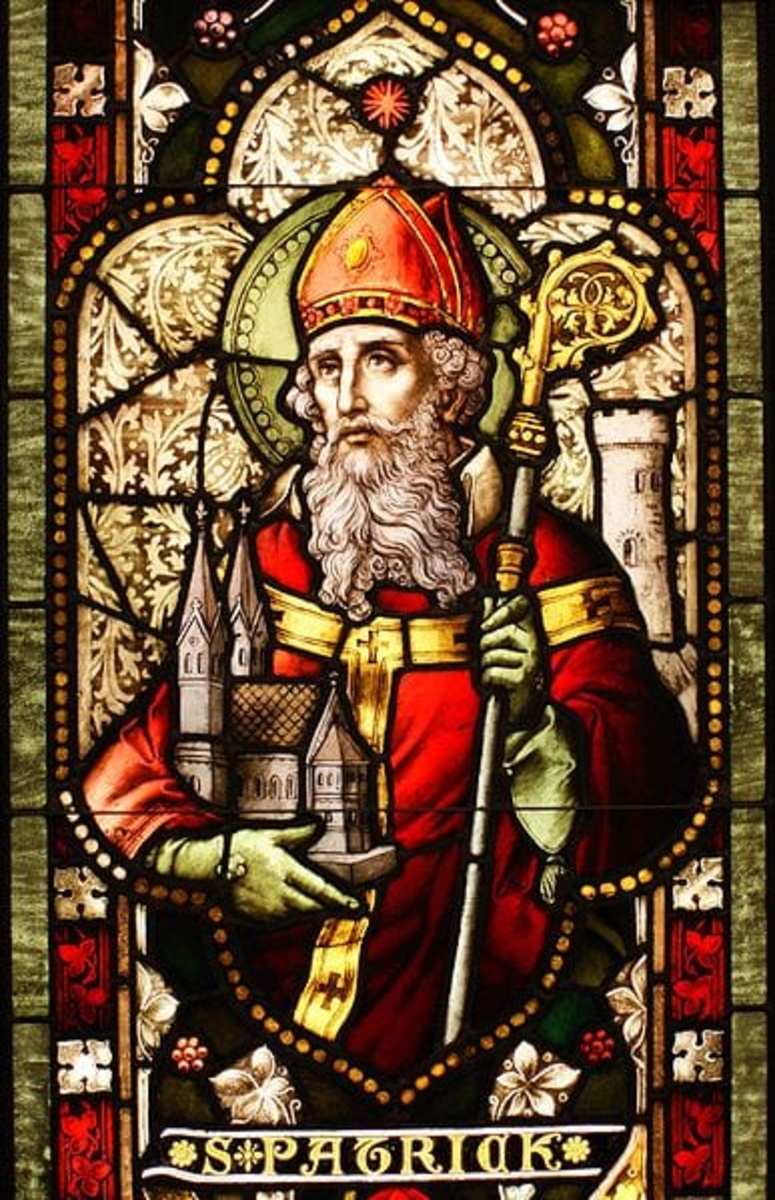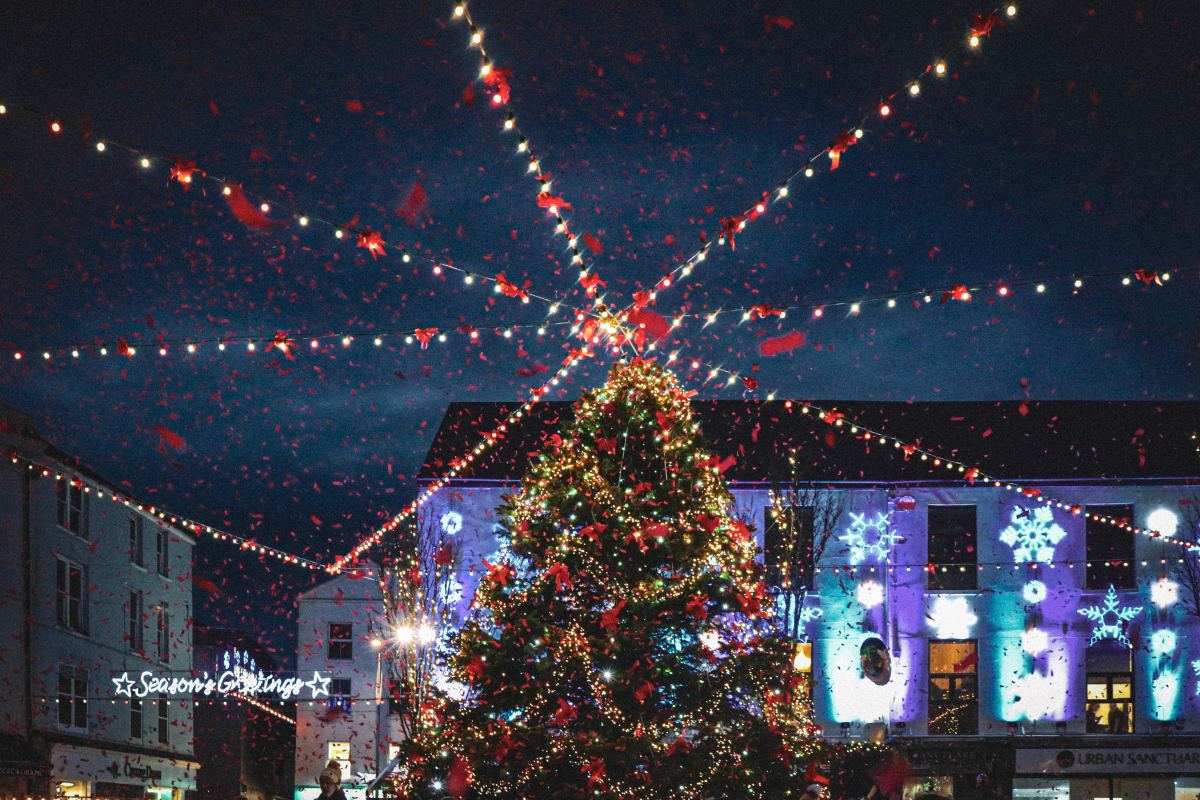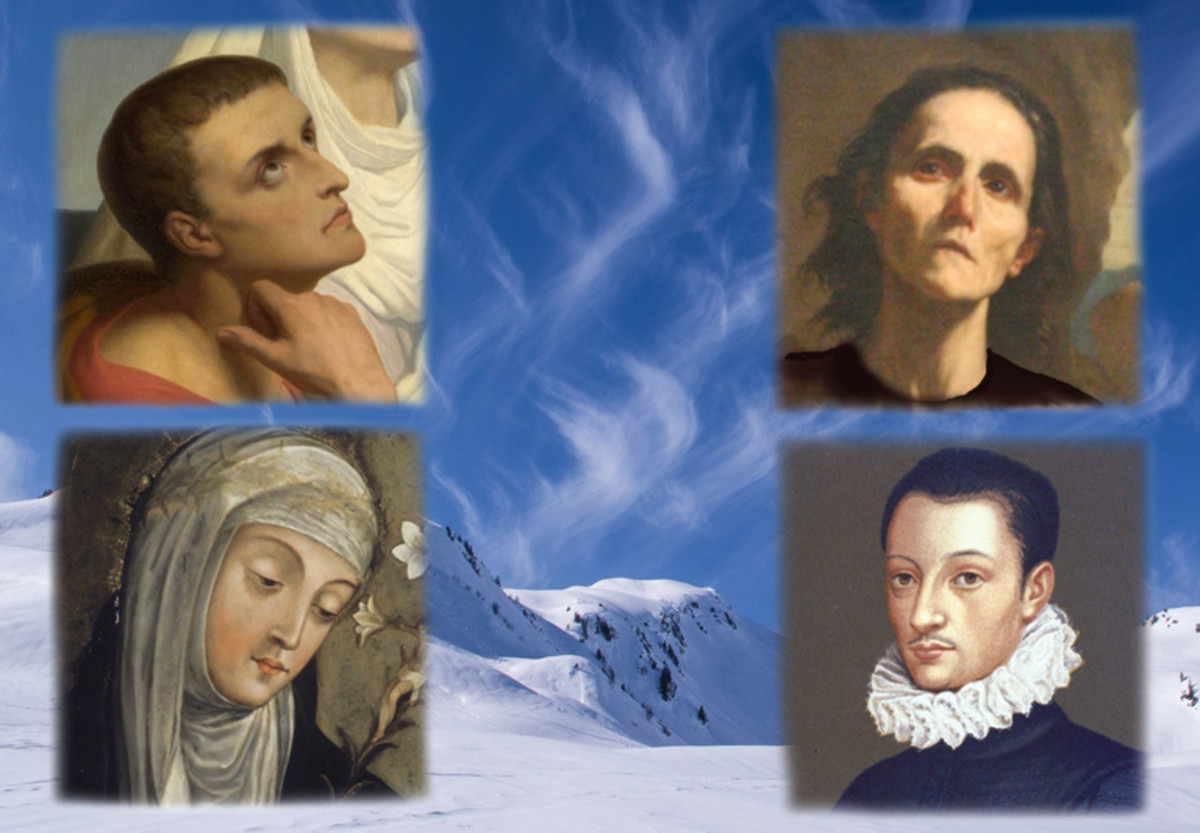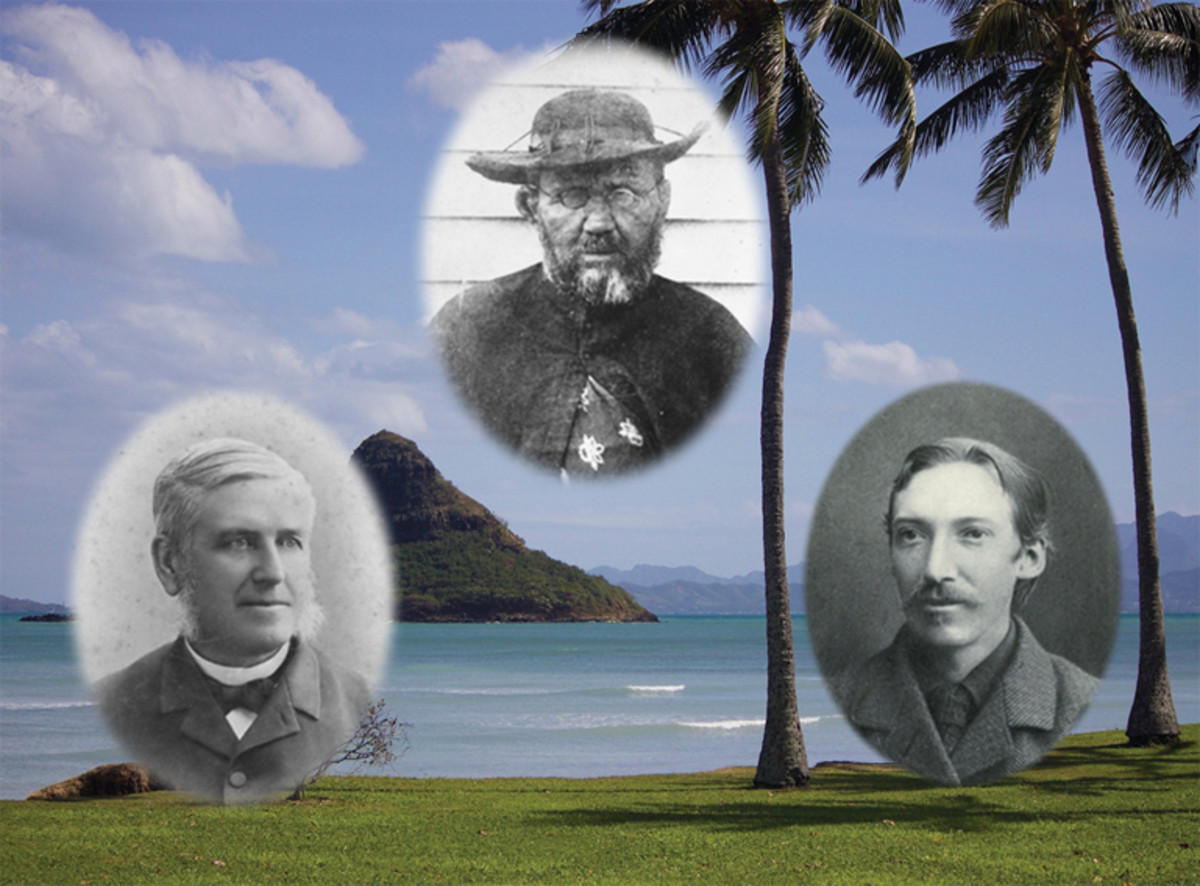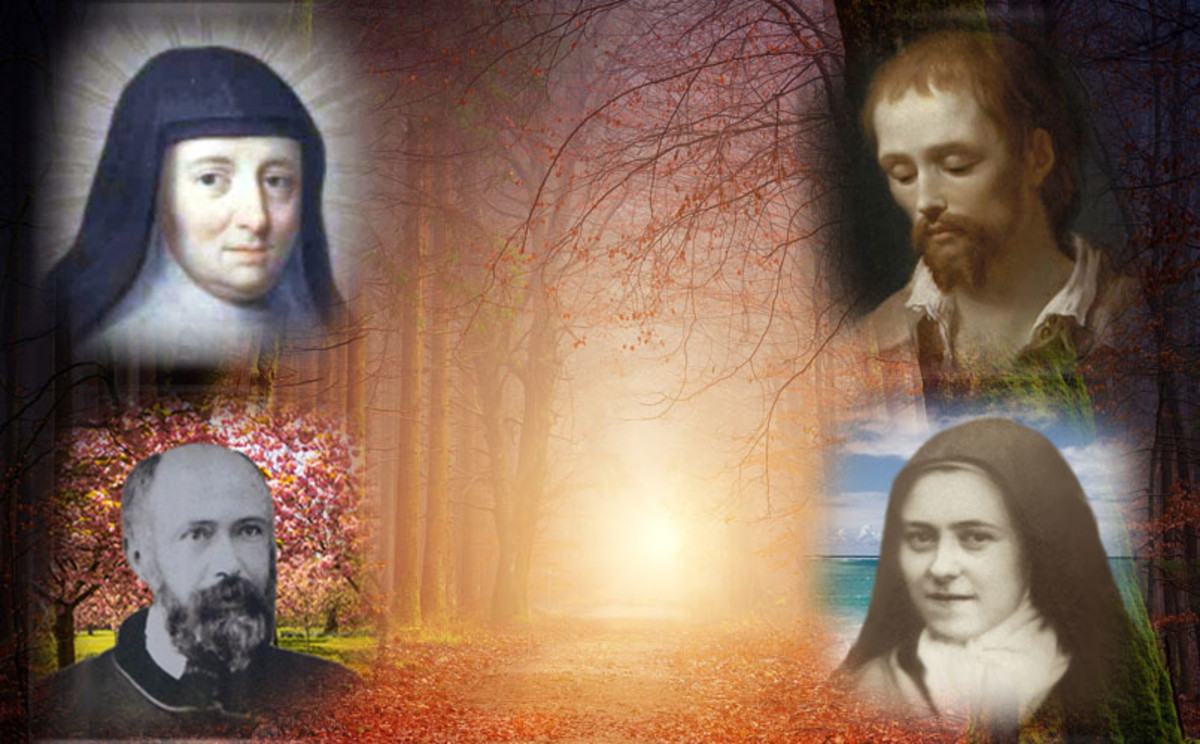St Brigid of Kildare
Naomh Brigid
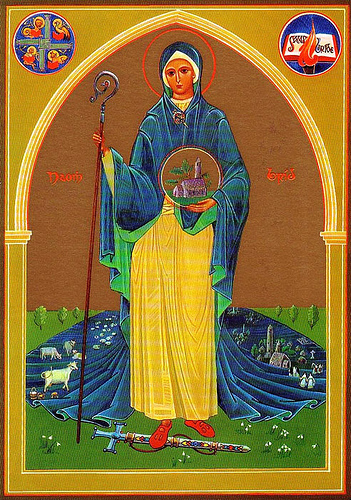
February 1st, feastday of St Brigid of Kildare
In Ireland Christianity did not replace paganism so much as superimpose itself on or merged itself with Celtic tradition. Sites of pagan worship or superstition quickly became associated with Christian worship and belief. Brigid's feast day, for example, falls on 1 February, the date of Imbolg, the pagan festival of spring.
Although Brigid is probably the best known Irish saint after Patrick, her life cannot be documented with much certainty. As with many saints the Biography of St Brigid of Kildare has been complicated by the passage of time. The line between historical fact and oral tradition is at times blurry. There are many variations of aspects of her life and I won’t attempt to be exhaustive!!Cogitosus's Life of Brigid was written not much more than a century after her death, but he was mainly concerned with recounting her many miracles
According to tradition Brigid was born at Faughart near Dundalk, county Louth Ireland in c.457. Much of the early accounts of her life are probably more legend than fact but her parents were said to be Dubhthach, a pagan chieftan of leinster, and Brocca (or Brocseach) a Christian pict who had been baptised by St Patrick. Other accounts tell us that Brigids mother was a portuguese woman kidnapped by Irish Pirates and brought to Ireland to work as a slave in Dubhthachs household much as St Patrick himself was.
Brigid was noted for her generosity to the poor, and as a child once gave away her mother's whole store of butter. Fortunately her prayers were answered, and the store of butter was miraculously renewed. Other tales of her piety recount how she could never refuse the poor who came to her fathers door. Her Father was not best pleased when she gave away milk and flour freely to all who needed it, and when after rejecting his choice of husband for her, she finally gave away his jewel encrusted sword to a leper he agreed to her request to become a nun.
Map of Ireland
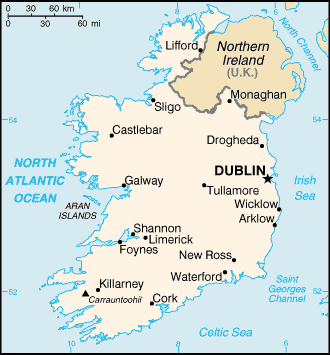
Becoming a nun
With seven other young women robed in white, she took her vows before Saint Mel, the abbot and bishop of Longford, and it is said that he mistakenly ( he was elderly) read the rite of consecration of a bishop and this could not be rescinded, under any circumstances. As a result Brigid and her successor Abbesses at Kildare held an administrative Authority equal to that of a bishop
Brigid is known for being the first and only bishop of the early church. Another account of how this came to be says that upon receiving her vows Saint Mel was inspired by God to make her a bishop.
Legend has it when seeking land for her community, she asked the King of Leinster only for as much as her cloak would cover. The cloak miraculously spread over the whole of the Curragh, an area of grassland famous then and now for horse racing. This legend is illustrated in the picture of Brigid above
Brigid, Pagan Goddess and Christian Saint
Brigid was named after the most powerful Goddess of the pagan religion her father practised.
Again the lines between pagan Celtic Ireland and Christian Ireland blurred, the attributes of the pagan Brigid, such as healing powers, learning and poetic skill, were readily perceived in the saint who established a convent at Kildare around 470. The name Kildare means "church of the oak", and there was probably a pagan sanctuary there with a sacred fire which burned for centuries into the Christian era.
The Goddess Brigid was the Goddess of fire whose manifestations were song, craftsmanship, and poetry which the Irish considered to be the flame of knowledge.
The Saint Brigid founded an internationally famous school of Art Metal and Illumination.
Brigid's feast day, falls on 1 February, the date of Imbolg, the pagan festival of spring.
Some believe these aspects may indicate that St Brigid was a partially or entirely fictional character based on the Pagan Goddess in order to convert more Pagan Celts to Christianity. The adoption of the most powerful pagan Goddess into the communion of Saints may have been seen as a smart move however most historians agree that St Brigid was a real person who’s life was embellished by enthusiastic Hagiographers.
St Brigid and Education
By the time of Brigid's death, c. 5 25, Kildare had become an important centre of learning.
Brigid founded a school of art metal work and illumination, over which St Conleth, Bishop of Kildare, presided. The Scriptorium produced the ‘book of Kildare’. Unfortunately this book disappeared around the time of the reformation and some believe it to actually be the book of Kells. Giraldes Cambrenis (archdeacon of Brecon) gave the book extremely high praise saying nothing he had ever seen compared to the beauty and skill of this book. Every page was filled with beautiful illumination and interlaced work of such skill, and colours of such harmony that it left the impression that it was the work of Angelic and not human skill.
Brigids small oratory at Cill-Dara (Kildare) became a centre of religion and learning and developed into a cathedral city. She founded two monasteries, there one for men and one for woman
As a result of St Brigids achievements many girls national schools in Ireland are named St Brigids.
St Brigids Cathedral Kildare
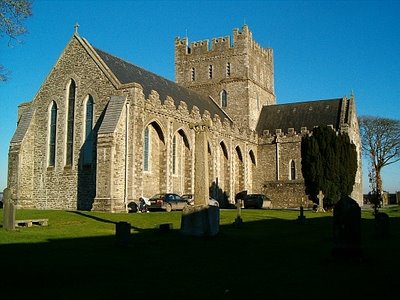
Saintly Activities
The saint travelled by chariot throughout Ireland, carrying on Patrick's work of conversion, but there is no evidence that they ever met. Many miracles of healing are attributed to Brigid, such as curing lepers and giving speech to the dumb. There are tales of her turning water into ale or stone into salt, and many concern her rapport with animals. She also negotiated the release of captives.
Sterling Silver St Bridgets Cross
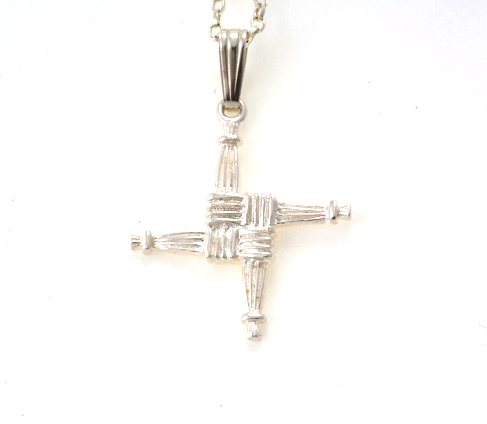
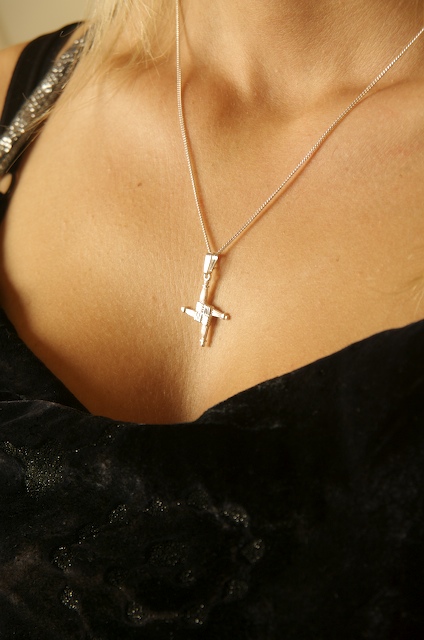
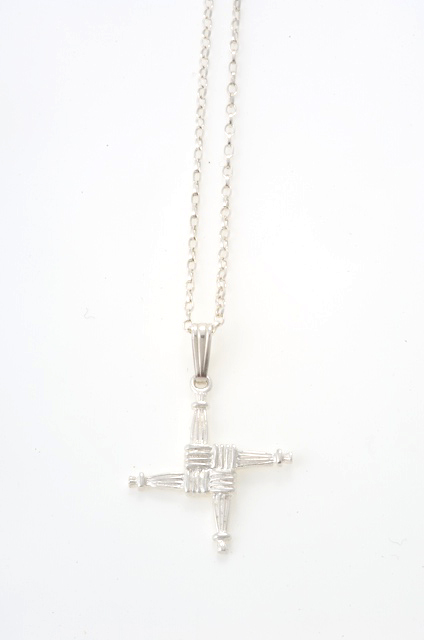
The St Brigids Cross
Perhaps the best known story is of her visit to a dying pagan chieftain. While she prayed, she plaited rushes into a cross. The chieftain heard her account of the cross as a Christian symbol, and was converted and baptised before he died. This legend does not appear in any of the oldest sources and to this day its origin remains lost in the oral tradition.
You may read that it remains custom in many houses to braid and display a St Brigids cross, a new one being made each St Brigids day, the old one being burned to protect the house from fire?? Well perhaps in some areas of Ireland (Gaeltacht areas perhaps) the custom holds true but I have never seen or heard of it being done in present times.
The St Brigids Cross is a popular design for Ist Communion gifts for girls in Ireland
Even allowing for the exaggerated stories told of St. Brigid by her numerous biographers, it is certain that she ranks as one of the most remarkable Irishwomen of the fifth century and as the Patroness of Ireland. She is lovingly called the "Queen of the South: the Mary of the Gael" by a writer in the "Leabhar Breac". St. Brigid died leaving a cathedral city and school that became famous all over Europe. In her honour St. Ultan wrote a hymn commencing:
Christus in nostra insula Que vocatur Hivernia Ostensus est hominibus Maximis mirabilibus Que perfecit per felicem Celestis vite virginem Precellentem pro merito Magno in numdi circulo.
(In our island of Hibernia Christ was made known to man by the very great miracles which he performed through the happy virgin of celestial life, famous for her merits through the whole world.)
to see more Celtic Jewelry visit www.SeodaSiCelticJewelry,com

View more beautiful Celtic Cross Jewelry

